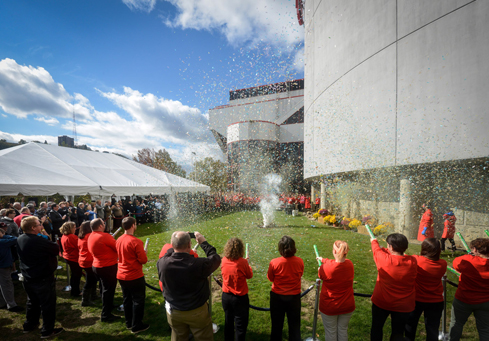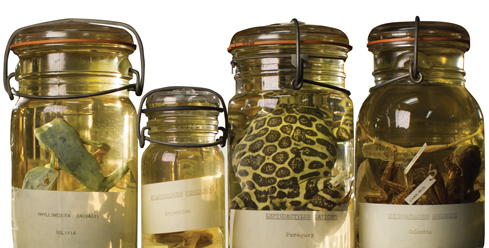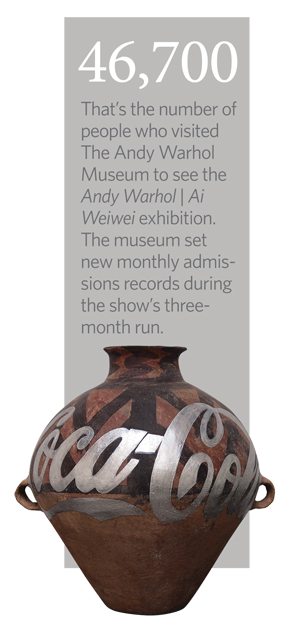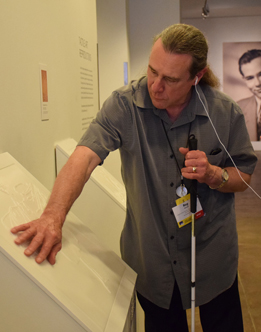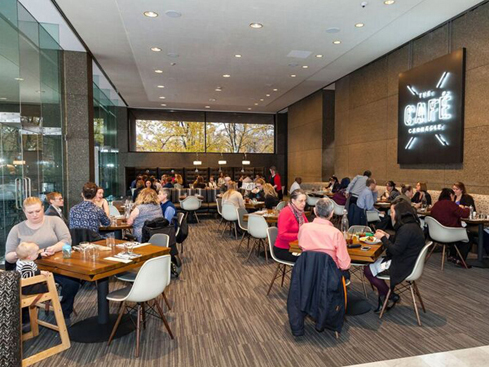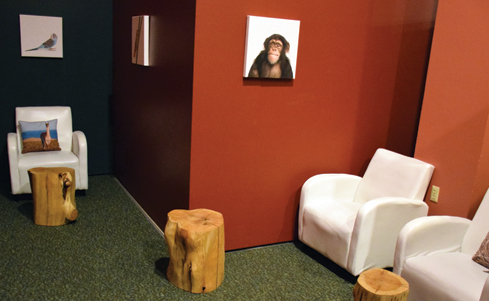 Winter 2016
Winter 2016|
A GroundBOOMing
“Who needs shovels when you have liquid nitrogen?” proclaimed Jerry Whitaker, chair of the Carnegie Science Center board and one of the keynote speakers at the October 25 GroundBOOMing event held on the Science Center’s scenic east lawn, the future site of its new Science Pavilion. Minutes later, lab-coated Science Center staff, backed by a drum roll from the Perry High School band drumline, literally blew up chunks of ground in celebration of what’s to come: a four-story glass structure that boasts 6,000 square feet of STEM Learning Labs that will allow
Secrets of the Alcohol House
Thanks to a $500,000 grant from the National Science Foundation, visitors will get a peek inside one of Carnegie Museum of Natural History’s most visually fascinating, scientifically significant, and some might say creepiest collections. The museum’s 19th-century National Historic Registry building, known as the Alcohol House, will become its first ever behind-the-scenes collections space to house an exhibit. It’s the somewhat secret home to 235,000 fluid-preserved amphibian and reptile specimens. But it won’t be secret for long. The award first gives the museum several years to make critical environmental upgrades to ensure the long-term preservation of the massive collection. Then the museum will go about creating not one but two exhibits, one inside the Alcohol House and one in the galleries. What makes this collection so deserving? It spans more than 100 years of scientific collecting in 170 countries; it boasts 148 holotypes (a specimen that forever defines a species, usually the first or the most complete discovered); and it includes specimens of five extinct and 78 critically-endangered species. It also includes large historical holdings from areas of the United States and the Caribbean that have suffered deep environmental change, and other areas in the tropical forests of Africa, the Amazon, and South East Asia in the midst of great change. “With ongoing habitat destruction and increased limitations on collecting around the world, the value of this irreplaceable resource will only continue to increase with time,” says Steve Tonsor, the museum’s director of science and research.
Ai Weiwei, Han Dynasty Urn with Coca Cola logo (silver), 2007, private collection, image courtesy Ai Weiwei studio, © Ai Weiwei
Hearing a museum, Out Loud
the artwork. It offers location-based content, screen-reader optimization, and enlargeable text, and shares audio descriptions of Andy Warhol artworks and stories about Warhol’s life and art as told by scholars, curators, museum staff, and Warhol’s friends and family members, including archival audio. The app’s first iteration highlights a dozen of Warhol’s early works, including three 3D-printed tactile reproductions that let visitors get a sense of the texture, shape, and composition of Warhol’s creations through touch. “Before we put a single design on paper or wrote a line of code, we talked to community partners who are blind or have low vision about what makes a good museum experience—and a good digital experience,” says Desi Gonzalez, The Warhol’s manager of digital engagement. And the early reviews are nothing but positive. “I am very proud to live in a city where a gem like The Andy Warhol Museum takes accessibility for all individuals to the next level,” says Erika Arbogast, president of Blind & Vision Rehabilitation Services of Pittsburgh. “Our clients are looking forward to the inclusive audio guide and being able to enjoy the museum utilizing their other senses.” Out Loud is available for free on iTunes, and devices loaded with Out Loud are available to borrow on-site, along with headphones, neck loops, and audio splitters.
"I’ve thought about this for a long time. I’d go there with [my son] Miles, and we’d sit in the café—we spent so much time there, he even learned to walk in the Hall of Dinosaurs. I’d look at this gorgeous space and think about how amazing it would be to run a restaurant here. "
Giving moms their space
to feed, nurse, and care for their children anywhere in the museum, the museum’s new breastfeeding private area is a space just for moms, conveniently located near kid-friendly Basecamp Discovery. “We want to be as welcoming and as inviting to parents with young children as possible,” said Exhibitions Director Becca Shreckengast.
|
Head-to-toe Science · Art as an Equalizer · Earth in the Age of Humans · Strength in Numbers · President's Note · Face Time: Jeffrey Inscho · Science & Nature: Lion Attacking a Dromedary · Artistic License: New Voices of Appalachia · About Town: Reconstructing Pittsburgh's Atomic Past · Travel Log · The Big Picture
 |
Copyright © 2017 CARNEGIE Magazine. All rights reserved. |

